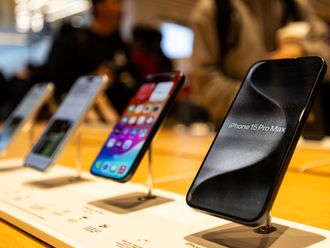Making headway in business is difficult at the best of times. But we find ourselves in the midst of the Fourth Industrial Revolution — a quagmire of upheaval, when our human resources will be the difference between success and failure.
This is a time for left-field ideas. It’s a time for tangential discussions and spirited debates. There is one sure-fire way to cultivate such an environment of innovation.
Build a diverse workforce that is welcomed into an inclusive organisation, where one’s background and circumstances become irrelevant next to the talent they bring and the dedication they display.
Women, minorities and those with disabilities not only deserve to be treated as equals, and organisations that dedicate themselves to tearing down barriers faced by some workers will inevitably end up tapping into previously unleveraged potential. Businesses and governments both have roles to play in the struggle ahead.
Policies both public and corporate can usher in exactly the kind of backdrop needed for the full range of human potential to flourish. In the tech industry, digital transformation delivers the means to engage customers, empower employees, optimise operations and reinvent products and services. But when people of all genders, ethnicities and abilities are consulted for their ingenuity, ideas become even richer, reflecting the diversity of their origins.
The precise actions taken by leaders in the field of diversity and inclusion vary — everything from getting to grips with accessibility tools within technology suites to developing feedback and outreach programmes to better understand millennial workers. The moral and social imperatives for such actions speak for themselves.
But there are many quantifiable business reasons and incentives for the private and public sector to act. The gender-parity gap alone invites examination from this perspective. Many organisations have spent decades studying barriers such as the “confidence gap” and “maternity bias”, and their effects on output, both on the micro and macro scale.
For example, McKinsey & Company in a report, revealed that women generate only 37 per cent of global GDP while representing half of the world’s working-age population. In the Middle East and North Africa, women generate only 18 per cent of regional GDP, despite making up half the population.
We need more women entrepreneurs; we need generational change, so that young women pursuing STEM-based careers can look to strong female mentors. Not just for inspiration, but for reinforcement of the idea that barriers to advancement are limited only by ability and drive.
Similarly, each ethnic group can be better inspired by success stories that come from their own communities. Those with disabilities need to be aware that their own creativity is sought after and encouraged by either their employer or — in the case of entrepreneurs — their government.
The results? Those who currently face the barriers discussed are not the only ones who benefit. That is the principal argument made by those who advocate for inclusion and diversity in the workplace.
Companies benefit, consumers benefit, governments benefit, societies benefit. We all achieve more.
Microsoft has long played an integral part in the global battle for workplace diversity and inclusion, forging strategic partnerships with other organisations around the world that hold the same values. And when our Ignite tour comes to Dubai, it will include a diversity and technology track devoted to exploring the benefits of an inclusive work environment.
Leila Serhan is Public Sector Director, Microsoft Gulf.












